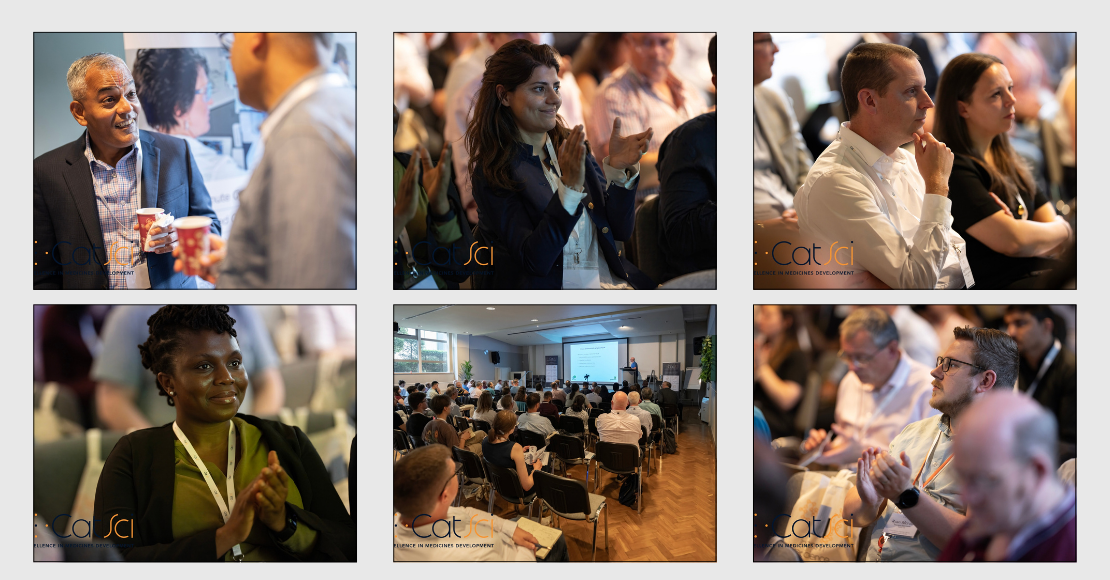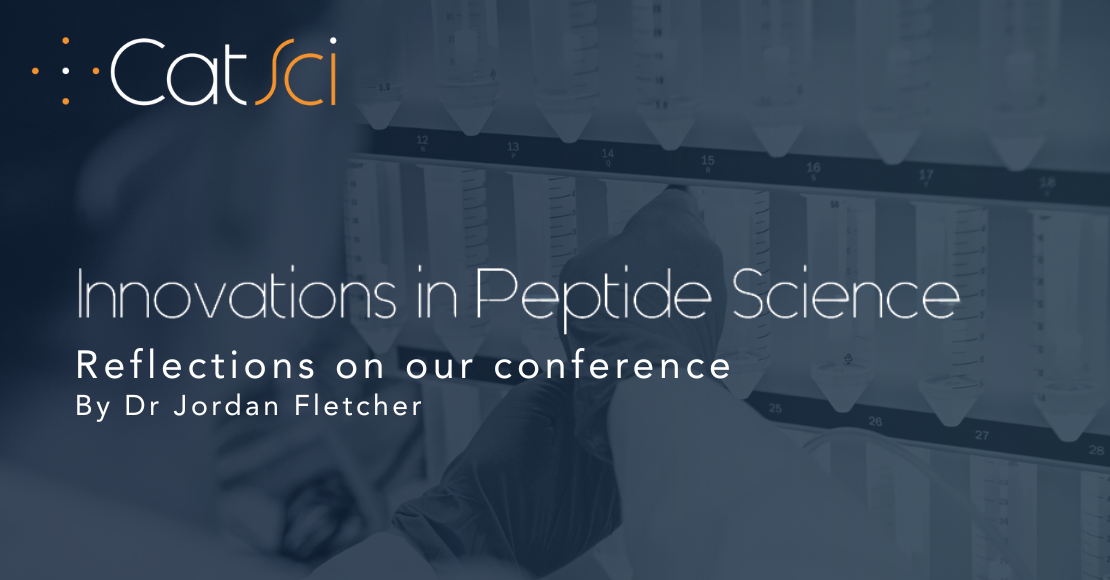
By Dr Jordan Fletcher
On July 1st, we welcomed over 100 scientists, innovators, academics, and industry leaders to BioCity, Nottingham, for CatSci’s inaugural Peptide symposium – Innovations in Peptide Science. With three packed sessions and an assortment of speakers across Academia, Biotech, and Pharma, the day offered a snapshot of recent advances in the field, and the kind of work that has led to a resurgence of interest in Peptide Science in recent years.
With the sun beating down outside, attendees began filing inside from just after 9 am and slowly filling the auditorium. Following tea, coffee, and assorted pastries, the meeting was opened by CatSci’s CCO Simon Tyler, who provided a warm welcome to all those attending and introduced CatSci’s growing presence and range of capabilities in the East Midlands. I then had the pleasure of outlining our expanding peptide synthesis capability offering, providing a virtual tour of the lab, detailing our ambition in this space, and introducing the team of peptide synthesis experts we have assembled.
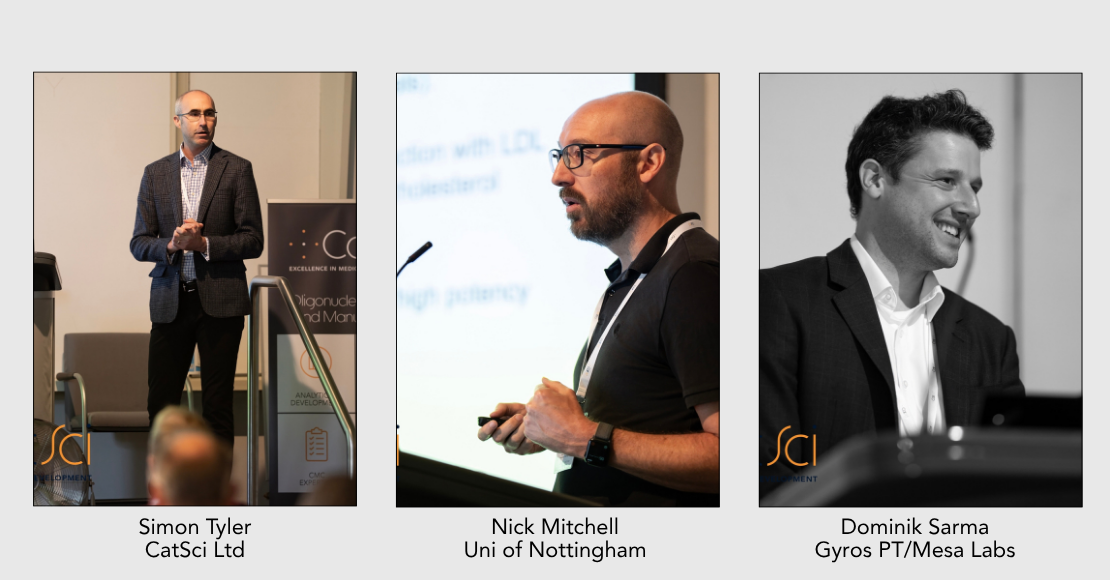
Session 1: Synthetic innovation and Purification – Chaired by Phil Abbott (Technical Director, Reach Separations)
The first technical session for the day was kicked off by Nick Mitchell (University of Nottingham) who delivered a fascinating talk on peptide macrocyclization: Firstly, via C2-alkylation of Tryptophan; and secondly via visible light-mediated desulphurisation of Cysteine. In wrapping up his talk, Nick also announced that he is organising the 1st Protein and Peptide Science Group Conference on December 15th and 16th later this year in Nottingham. With support from the RSC secured, this promises to be an excellent event which we intend to help support.
Dominik Sarma (Gyros PT/Mesa Labs) followed with a talk that explored advances in peptide synthesis and purification. Here, Dominik took the audience on a fascinating tour of the chemistry behind Gyros’s PEC purification system, as well as some recent developments they have made to refine how it can be used.
From the University of Glasgow, Drew Thomson then introduced the audience to a novel approach his group have been successfully employing towards the design of chain-specific ubiquitin binding peptides. This work, some of which was recently published (Vosbein et al., 2024), provides tantalising hints for how they could be employed as tools for modulating the ubiquitin-proteasome system.
Rob Young (Blue Burgundy) was up next, who provided a thought-provoking talk which made the case for peptides and other new modalities in therapeutic development, and why we should look beyond what has traditionally been considered “drug-like” molecular space.
Closing the session, Peter Ridgway introduced us to Reach Separations with a focus on their industry-leading expertise in supercritical fluid chromatography (SFC) and chiral separation, and how they have recently begun optimising workflows for peptide analysis and purification. With its green credentials, SFC offers an exciting alternative to RPHPLC for the routine purification of peptides.
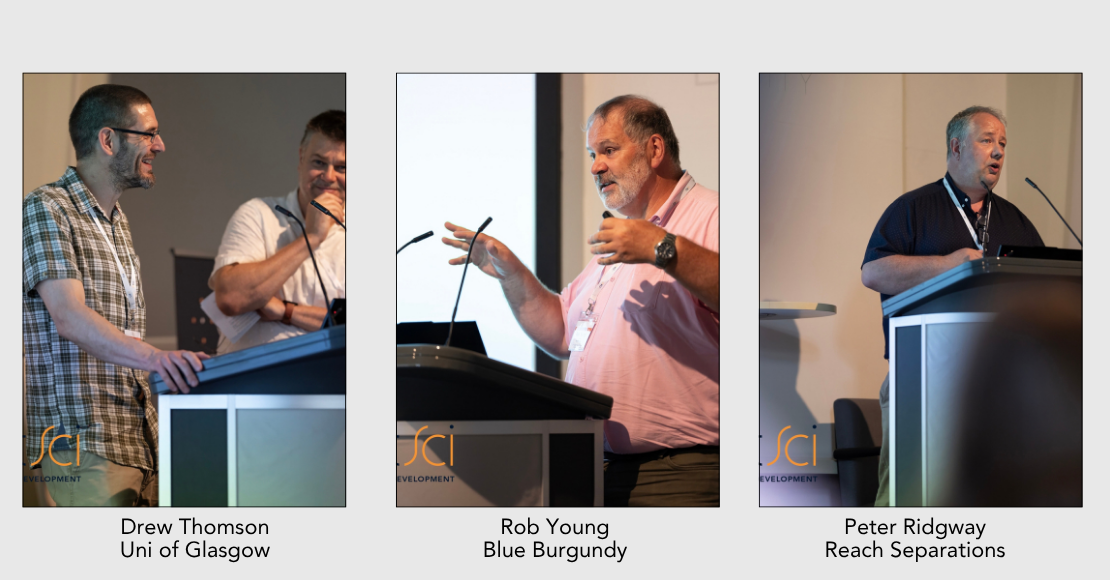
Lunch: Science over Sandwiches
With the first session for the day closed, it was time for attendees to fill a plate with a few sandwiches, delicious cakes and enjoy a bite to eat. With so many peptide scientists, academic researchers, and industry experts in the room, conversations flowed freely – it was a welcome reminder of the value of hosting face-to-face meetings and the importance of face-to-face meetings for the community.
Session 2: Green Chemistry, Therapeutics, and New Modalities – Chaired by James Krupa (Team Leader, Peptides)
Once lunch was finished, the afternoon session was opened by Industrial Keynote Speaker Don Wellings (Spheritech) whose presentation describing the solid-phase assembly of peptides in water showcased a potentially game-changing innovation in green peptide chemistry. His work in developing water-compatible resins, coupling strategies, and procedures for dissolving Fmoc amino acids in water has the potential to revolutionise how the field goes about synthesising peptides, and greatly reduce their environmental impact.
Continuing with the theme of green chemistry, the second speaker of the session was Piers Gaffney from Exactmer who described an ongoing project working towards the synthesis of the blockbuster drug Tirzepatide by the sequential coupling of protected peptide fragments using their Nanostar Sieving Platform. Exactmer has previously used this liquid-phase platform for the preparation of oligonucleotides, and so it was great to hear of their efforts to adapt this for the synthesis of peptides.
Rounding out the green peptide mini-session was Hanieh Ijakipour of CEM who delved into some of the science behind the company’s so-called “no wash” methodologies, which are offered on recent iterations of their SPPS instruments. This technique – which relies on the evaporation of base at high temperature following Fmoc-deprotection – has the potential to significantly reduce solvent usage in routine laboratory synthesis.
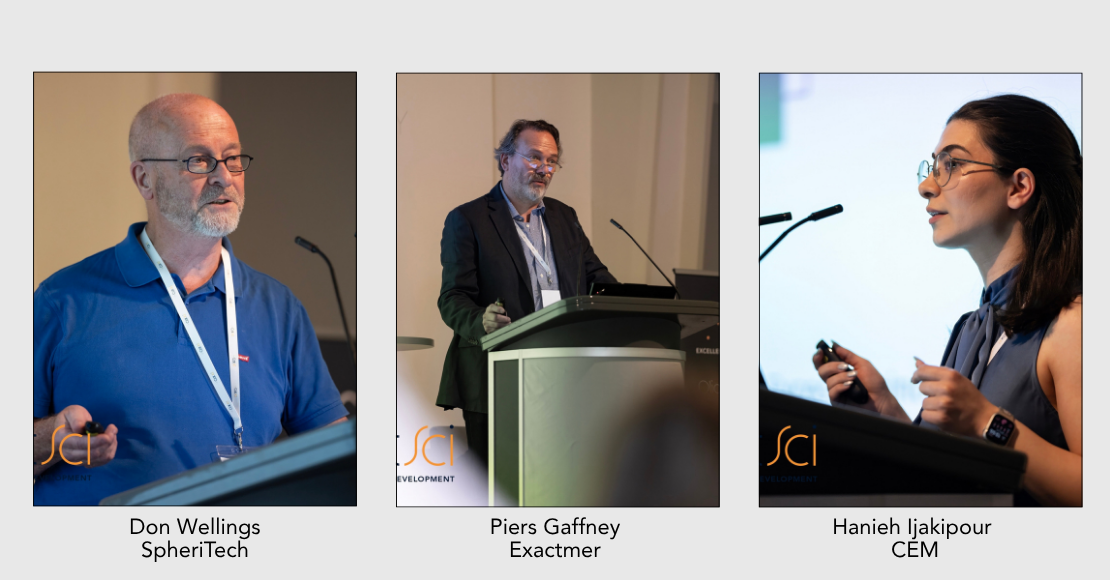
Moving away from green chemistry, and towards the therapeutic use of peptides, next up on stage was Mark Eccleston, CEO of ValiRx. Here, Mark introduced peptide CLX001 – a 15-residue pore-forming, membrane lytic, peptide which targets cancerous cells – going on to describe the use of PEG-based nanoparticles as delivery vehicles for improved targeting.
CatSci’s own Cameron Thorpe followed, providing a momentary break from peptides with an overview of the Oligonucleotide capabilities offered by our laboratory in Cardiff. His talk also highlighted the talent to be found in their group, before he went on to describe some recent collaborative work on peptide/oligonucleotide conjugated molecules.
Finally, Anna Peacock (University of Birmingham) rounded out the session with an excellent piece of science on coiled-coil ligands as MRI contrast agents. This work, in which a lanthanide binding site is incorporated into de novo designed trimeric coiled coil, is an elegant demonstration of how precision design – bridging peptide and inorganic chemistry – can unlock new tools for medicine.
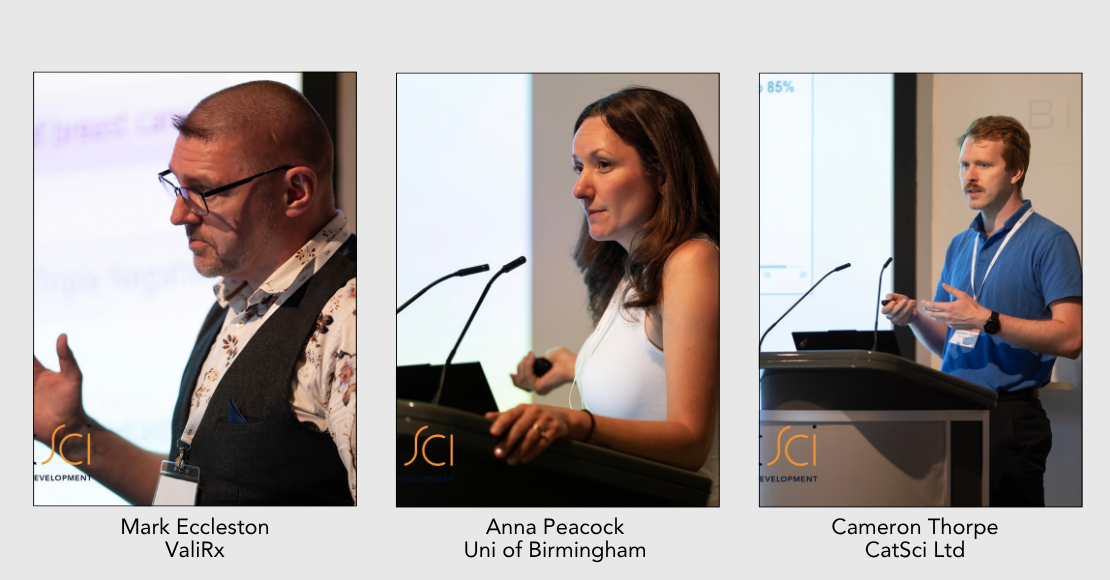
Tea Break: Who wants an ice-cream?
With the sun beating down outside, and the temperature steadily rising inside and out, Dan Croucher and Caitlin Daniels from our organising committee sprang into action providing the culinary highlight of the day for attendees: One hundred ice creams! Perhaps it was the joy of a cold ice-cream on a hot summer’s afternoon, but there was plenty of energy and cross-pollination around discussions in the room during the break.
Session 3: Peptides in Pharma and Next Generation Constraints
Having reduced a mountain of ice-creams to a pile of bare sticks, it was time to return to the auditorium for the final three talks of the day. With a slight change to the programme, Nara Daubeney (Phaim Pharma) got session three underway, describing her company’s novel peptide-based Antigenic Immune Modulation (AIM) platform, and its application towards treatment for autoimmune diseases including type-1 diabetes.
Continuing with the pharmaceutical theme, Jefferson Revell (AstraZeneca) gave a fantastic talk on the targeting of tumours by pairing peptides with radiopharmaceutical agents to deliver site-specific payloads in oncology.
To close out the day, Andrew Jamieson (University of Glasgow) then delivered a tour de force on the macrocyclisation of peptides, his group’s work spanning peptide and medicinal chemistry. Of particular note, he introduced the Raman-active, diyne-girder as a method of stapling α-helical peptides. He finished his talk by describing some fascinating recent work on α-Conotoxin GI with intriguing structural insights into how it may function.
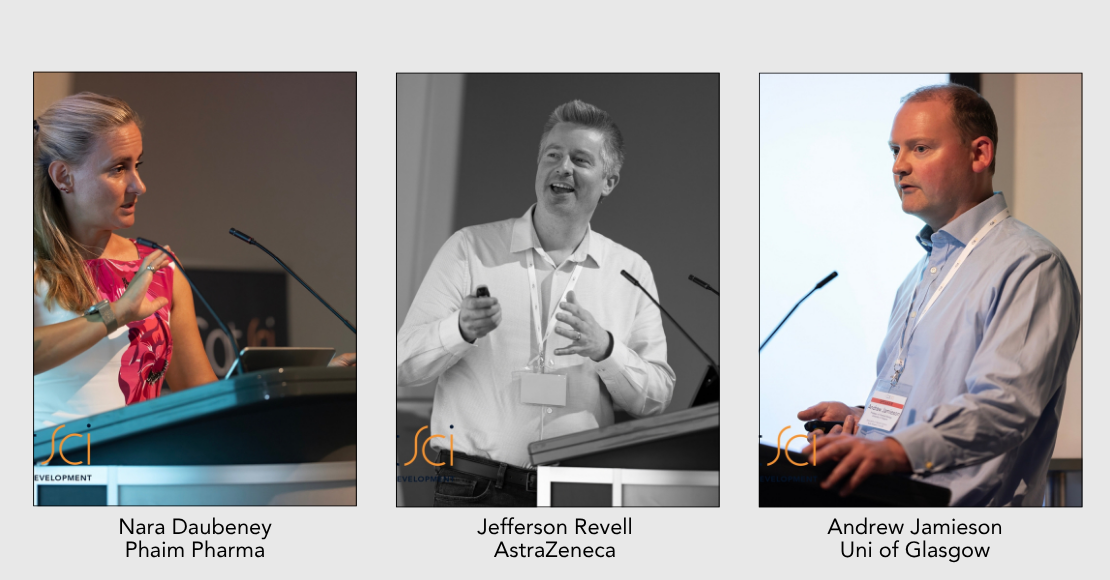
Time for a Beer
With the formal programme drawn to a close, a sizeable cohort of attendees moved on to a local pub – Fellows, Morton & Clayton – to continue discussions in a more relaxed setting. It was here that conversation flowed freely and some of the best discussions of the day took place over a pint or two, and new connections were forged. Amongst people that I spoke to, there was a general consensus that the day had been a success, and the belief that the UK has an outstanding peptide community that benefits from coming together at face-to-face events such as this.
Looking Ahead
This was the first peptide-focused symposium that CatSci has hosted, and judging by how the day went, and the feedback we have had since, it won’t be the last. Events like this are so valuable, not only for the science that is showcased, but also as a vehicle for bringing the community together. There is genuine momentum in the field at the moment, and it is exciting to be a part of its growth. In the coming weeks we will settle on a date for next year’s event, so please keep a lookout for that announcement.
Finally, I would like to once again thank all the attendees, and the speakers in particular who made the event such a success. From the CatSci team, I’d also like to thank Dan Croucher, Caitlin Daniels, and James Krupa whose hard work enabled this event to happen.
We look forward to seeing you next year.
